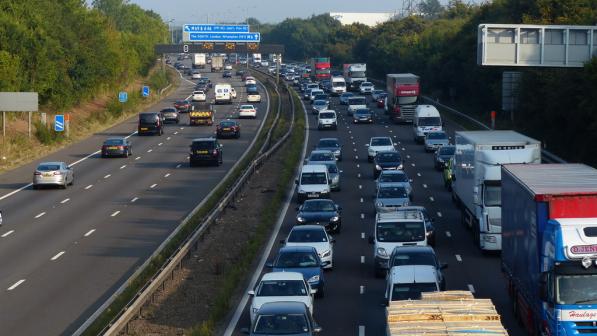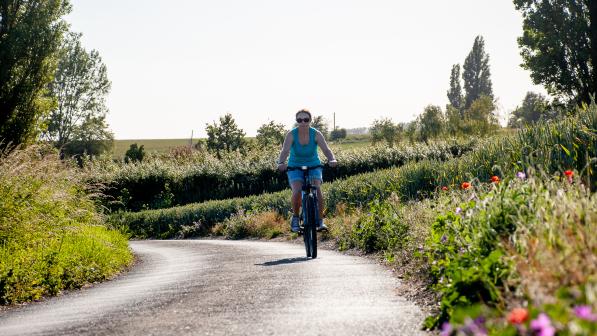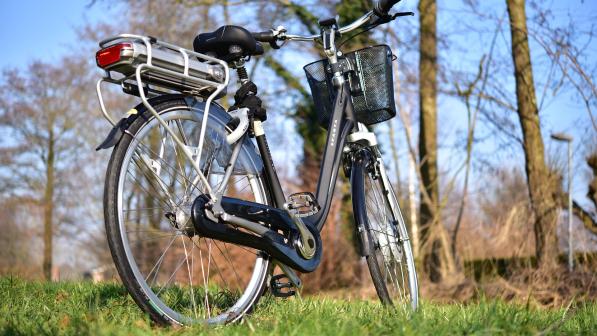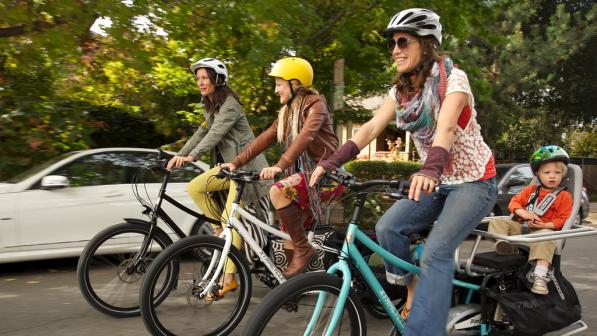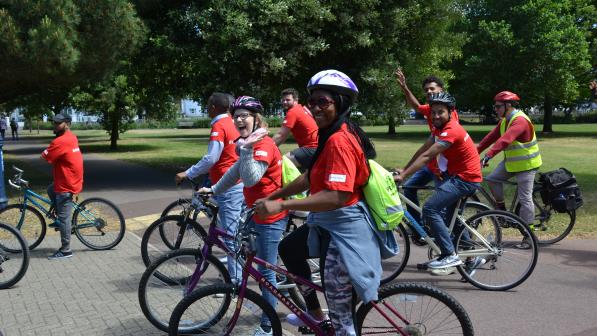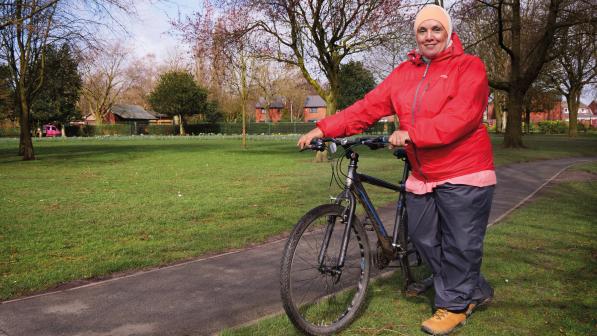E-bikes: a real ‘green investment vehicle’ for the Government

When I hear financial advisors talking about ‘green investment vehicles’, I get confused. Rather than thinking of ethical ISAs, I make the assumption that they are talking about subsidies for electric cars! Or maybe, just maybe, that they're talking about e-cycles?
The Government made headlines this week with its Ten Point Plan for a Green Industrial Revolution, and particularly its eye-catching announcement that it plans to bring forward the date for ending the sale of petrol and diesel cars from 2040 to 2030.
This decision, following a consultation and a great deal of campaigning from environmental groups, is a welcome step forward for tackling both the air pollution and climate crises.
However, it’s only a part of the solution. The Government should not kid itself that it’s enough.
Research for Friends of the Earth, carried out by consultancy Transport for Quality of Life (TQL), looked at whether it was enough just to electrify our motor vehicle fleet and, if not, what more would be needed. TQL found that, even on the most optimistic assumptions about rapidly replacing our motor vehicles with battery-electric power and decarbonising their power supply, we’d still also need to reduce motor traffic volumes by at least 20% by 2030.
Under more pessimistic scenarios of vehicle decarbonisation, we’d need a massive 60% reduction in traffic, if transport is to play its part in a net-zero future. In short, the Government’s plans to spend £27.4bn on England’s motorways and trunk roads still make no sense, even after bringing forward the deadline for ending the sales of petrol and diesel vehicles.
In any case, electric cars still cause congestion and danger, and that danger still prevents old and young people alike from walking and cycling. They still also create pollution, too. The particulate dust from the wear-and-tear of car tyres and brake-pads is still lethal.
This is why Cycling UK has long questioned why the Government’s Office for Low Emissions Vehicles (OLEV) provides subsidies for the purchase of electric cars, electric vans, electric lorries, electric taxis, electric motorbikes – every type of electric vehicle, except electric pedal cycles (or e-cycles).
The Government has for years disputed the case for subsidising e-bikes, claiming that people wouldn’t use them to replace car trips. This has been comprehensively disproved, through evidence from several projects in Austria, Australia, California, France, the Netherlands, Norway and Sweden, as well as from Brighton, Exeter and other projects from around the UK.
Another piece of research by TQL, this time for the Bicycle Association, has shown that, pound for pound, subsidies for purchasing e-bikes save at least twice as much CO2 emissions as subsidies for electric car sales. And that’s before we factor in the reductions in congestion, road danger and inactivity-related ill health that could be achieved by subsidising e-bikes, and not by electric cars.
The Cycle to Work scheme: a partial solution
Last year, the Government agreed to remove the £1,000 upper limit on the value of pedal cycles that could be bought through its Cycle to Work scheme. This scheme allows people to hire a pedal cycle from their employer, providing the cycle was to be used mainly for work-related journeys, and gain a tax deduction from their hire payments.
The employer then has the option to sell the bike at the end of the rental period (although, for complex reasons to do with tax law, this offer cannot be made at the start of the rental period). Overall, it can be a very good deal. And the lifting of the £1,000 ceiling made it much easier to use the scheme to buy e-bikes.
However, you can only benefit from the scheme if you are in employment. This excludes many older people, health patients, people with disabilities and others who are not in employment. These are often the very people whose health, wealth and wellbeing could most benefit from taking up cycling, but who are least likely to do so without a helping hand.
That is particularly true for older people, people with health conditions and/or disabilities, which mean they need an electric and/or adapted pedal cycle. People in these groups are unlikely to be earning the salaries that would allow them to afford the expensive electric and/or adapted pedal cycles that might meet their needs.
Additionally, they will almost certainly need a try-before-you-buy offer in order to find out whether cycling will work for them and, if so, what kind of non-standard pedal cycle will meet their needs.
The Government’s excellent Gear Change vision for cycling and walking, published earlier this summer, included a commitment to “establish a national electrically assisted bike support programme”. However, since then, there have been no further details, so I was very pleased when The Times reported that the Government is at last thinking of subsidising e-bikes directly.
Targeting the subsidies towards those who could benefit the most
I remain somewhat concerned that a straightforward purchase subsidy for e-cycles risks simply being a subsidy for relatively affluent people to buy expensive bikes (even though the same is equally true for electric car purchase subsidies). Something different is needed if we really want to get e-cycles into the hands of the groups who could most benefit from taking up cycling, but who are least likely to do so without some targeted support.
Specifically, the evidence from other countries tells us is that older people, health patients and disabled people really benefit from having an opportunity to try before they buy. Their starting assumption is often that cycling is “not for someone like me”.
Before spending a lot of money on an e-bike or (especially) an adapted electric-assisted pedal cycle, they need to try it out first, so that they can discover how much easier it is to cycle with a bit of electrical assistance.
I’d therefore urge the Government to design its e-cycle support package so that groups like Cycling UK’s network of Community Cycle Clubs are able to offer e-cycles, and electrically-assisted pedal-cycles on a try-before-you-buy basis to people from those demographic groups who wouldn’t normally take up cycling, but who could hugely benefit from doing so.
I’d also urge them to offer more generous support for people whose doctors recommend they take up cycling as a form of exercise on prescription. Gear Change also promises that the Government will “work more closely with the NHS, incentivising GPs to prescribe cycling and building cycle facilities in towns with poor health”.
Community Cycle Clubs and Cycling UK’s Cycling for Health project could be a perfect way to enable GPs to refer patients to give cycling a try, knowing that they will be provided with a suitable pedal cycle to try out, support to develop their cycling confidence and skills, and knowledge of how to deal with the practicalities of taking up cycling.
Glasgow City Council runs a wonderful project in which it makes access to a public bike-share scheme available at a heavily discounted rate to people from some of Glasgow’s most disadvantaged communities. The council also works with the charities Bike For Good and CoMoUK to provide those benefiting from this scheme with advice and support. The results can change people’s lives.
I really hope the governments of all four nations of the UK will see the case for supporting similar projects throughout the country. Encouraging more people and a wider range of people to take up cycling isn’t ‘all about the bike’. As Cycling UK’s own Community Cycle Clubs and Cycling for Health programmes have shown, it’s also about the support that comes with it.
